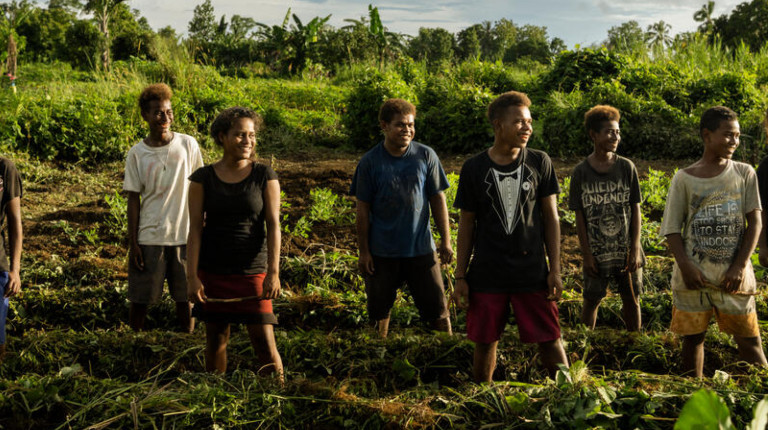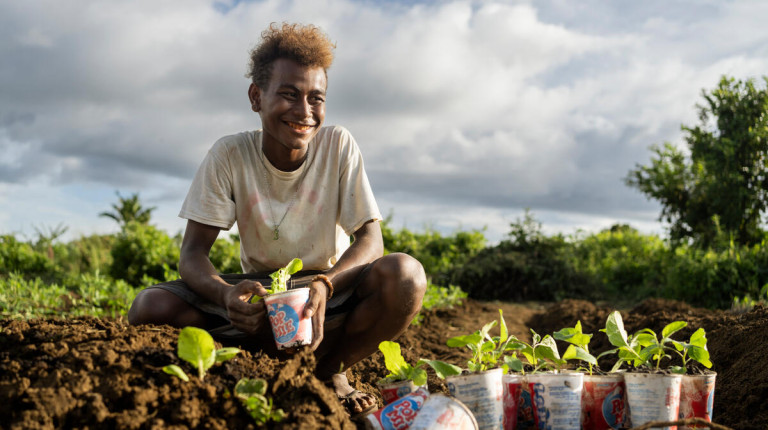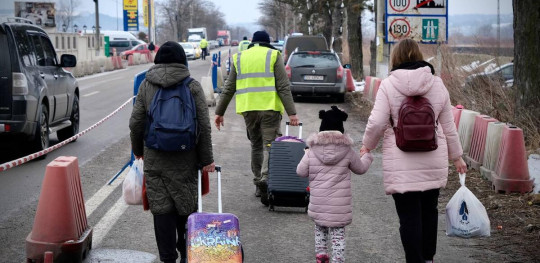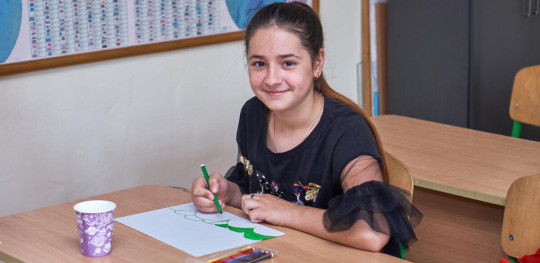Save Tomorrow. Act Today.
We’re working to ensure children, their families and future generations can cope with climate shocks, adapt to climate change and break out of poverty.
The climate crisis is a child rights crisis!
Children are facing more extreme weather in an increasingly unequal world. Climate-related heatwaves, droughts and flooding destroy crops, livestock, and livelihoods. Millions of families today can’t afford to feed their children or send them to school. Conflict, climate change and the cost-of-living crisis are making poverty worse worldwide – especially for children and their families who are forced to leave their homes.
Without addressing the climate crisis directly, today's children will bear the greatest burden, especially those living in the most vulnerable regions in the world.
All children have the right to a social safety net so they can cope with climate shocks, adapt to climate change and break out of poverty.
Join us to support children today and in the future.
How are we helping children and their families adapt to climate change?
As the world’s leading child rights organisation, we’re tackling climate across everything we do, from providing climate-resilient farming in Solomon Islands to elevating children’s voices at home in Aotearoa New Zealand.
We’re working to make sure children and their families have strong welfare systems, cash assistance, and climate-smart livelihoods, so children now and future generations can cope with shocks and break out of poverty. Through stronger welfare systems and proven livelihood support, we’ll see families through the unexpected tough times and help secure a better future for their children long term.
We’re leading the way on understanding how climate change hurts children, and responding with smart, evidence-based solutions.
With the dedicated support of our community, we empower families to safeguard their livelihoods against climate change and equip young people with the skills needed for success in emerging green and digital economies.
We’re supporting children and displaced families in urban slums, and innovating to create neighbourhoods where healthy, happy children can thrive.
Campaigning for and with children
World leaders have been too slow to make the systemic changes needed for sustainable development, to protect children and the planet. But it doesn’t have to be this way. Here in Aotearoa New Zealand and around the world, children are speaking up and leading the way towards a better world and it’s time for us to follow their lead. We must listen to their calls for action and find lasting solutions that support and protect children.
Save the Children has a unique role in amplifying children's voices and encouraging leadership in the climate movement. We aim to continue to support children to be part of the solution and influence decisions by world and local leaders – especially the most marginalised who are disproportionately affected by climate change. We’re campaigning for and with children to hold leaders accountable for addressing climate change, creating well-funded safety nets and building fair, green, equal societies. Together we are calling for urgent action on the climate crisis as well as inequality to create a safe, healthy, and happy future for children.
Learn more about a generation fighting for action on the climate crisis.
We will continue to stand side by side with children campaigning for a cleaner environment and a safer world and helping communities become more climate resilient.
New Zealand's first COP Simulation
In September 2024, we hosted Aotearoa's first ever COP Simulation event - an opportunity for Kiwi young people to share their insights, experience and advice around climate action. COP29 - or Conference of the Parties - is the UN's Global Climate Summit.
Insights and experiences shared by youth at the event formed a statement of asks that was presented to New Zealand politicians and the delegation travelling to COP29 held in Baku, Azerbaijan from 11 to 22 November 2024. This statement also fed into a Global Child and Youth Statement collated by Save the Children International.
“Rangatahi are disproportionately impacted by climate change, yet our voices are among the most overlooked,” says Save the Children Generation Hope New Zealand Ambassador Delara.





